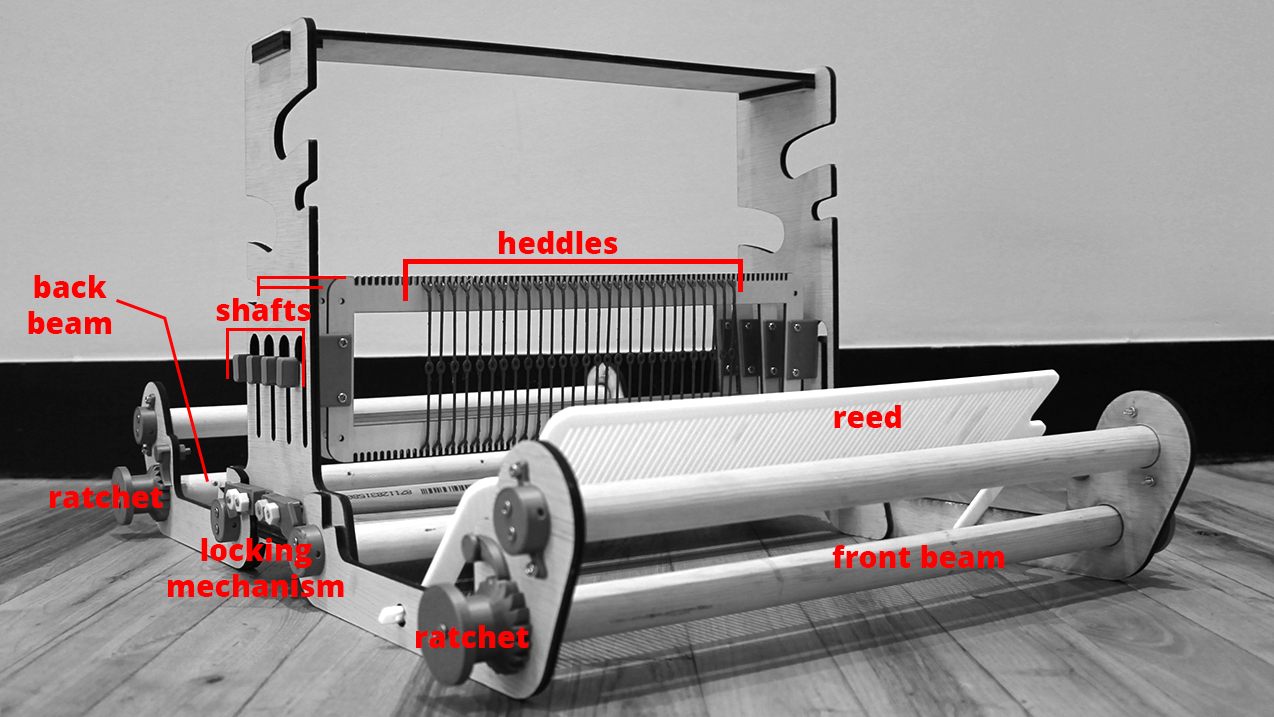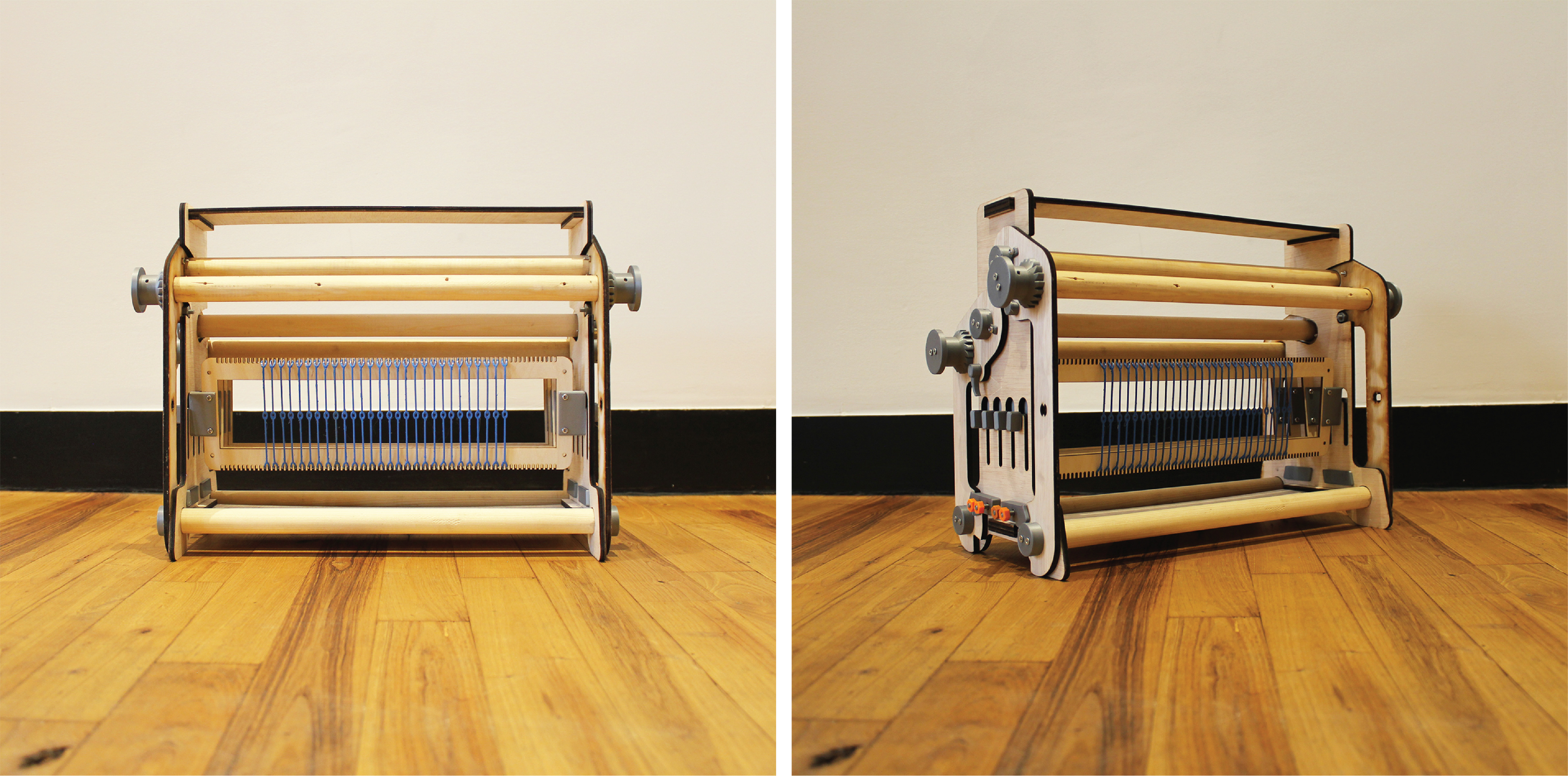Open-Source Foldable 4-Shaft Weaving Loom
The final project of my internship at Fablab Amsterdam and Waag Futurelab is a 4-shaft weaving loom. The main objective of this project is to make shaft looms available for all users as it is an open source project. The available 4-shaft looms on the market are usually very expensive for hobby weavers and craftspeople who would like experiment with weaving. This is essentially a loom which you can experiment with various patterns and materials. The added functionalities of the loom are: being able to change the tie-up pattern without rewarping the loom (warping a loom is one of the most tedious part of weaving), and being collapsible to allow users to carry it with ease and store it in a small space when not used.
The Design
The most essential terminology while weaving is knowing warp and weft threads. The warp threads are the vertical threads that stay in tension and weft threads are the horizontal threads which go over or under the weft threads.

There are 5 necessary motions for weaving:
- Shedding: Separating the warp threads, into two layers to form a v-shaped tunnel known as the shed. The above layer goes over the weft threads and the below layer goes under the weft threads. Shafts are picked up or let down to create the shed.
- Picking: Passing the weft thread through the shed. The weft threads are usually carried with tools called shuttles.
- Beating-up: Pushing the newly inserted length of weft, known as the pick, into the already woven fabric at a point known as the fell. The reed is used in this process. It also keeps the warp threads at equal distance from each other.
- Warp letting-off: Releasing the tension on warp threads from the back beam. This is achieved by special gears called ratchets. Ratchets can rotate in one direction but their rotation is blocked by pins in the other direction, unless the pins are released.
- Cloth taking-up: Rolling the woven cloth on the front beam. This is also achieved by ratchets.

The loom takes up 600(L)x440(W)x310(H) mm space when open and in use. And it takes up 202(L)x440(W)x310(H) mm space when folded and ready to go or stove away.


Bill of Materials (BOM)
Here is the bill of materials (BOM) for making your own loom. You can make a copy for yourself via Google sheets link.
Downloadable Files
Here are the files required for making your own 4-shaft loom. Download them by clicking on the links:

This work is licensed under a Creative Commons Attribution-NonCommercial-NoDerivatives 4.0 International License.